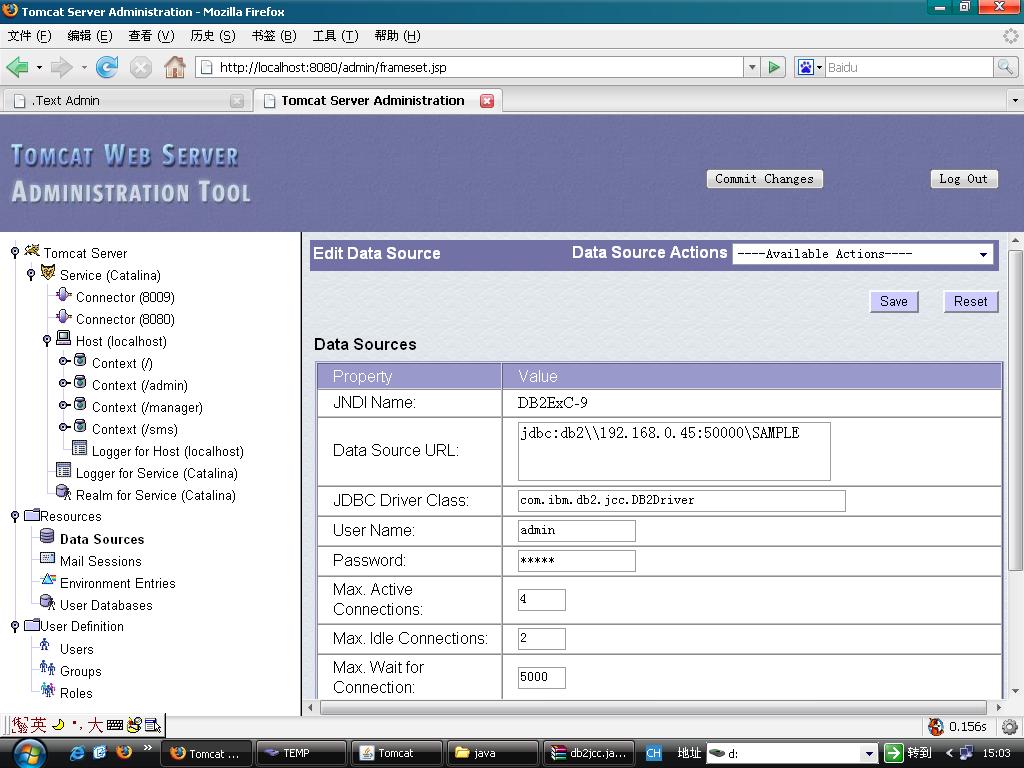Today with tomcat admin, a Graphic interface for us to config the JNDI for our program,I configured the context and connection pool jioning IBM DB2 ExC-9.Actually,JNDI is an API specified in Java technology that provides naming and
directory functionality to applications written in the Java programming
language. It is designed especially for the Java platform using Java's
object model. Using JNDI, applications based on Java technology can
store and retrieve named Java objects of any type. In addition, JNDI
provides methods for performing standard directory operations, such as
associating attributes with objects and searching for objects using
their attributes (Name-Value,context).JNDI is also defined independent of any specific naming or directory
service implementation. It enables applications to access different,
possibly multiple, naming and directory services using a common API.
Different naming and directory service providers can be plugged in
seamlessly behind this common API. This enables Java technology-based
applications to take advantage of information in a variety of existing
naming and directory services, such as LDAP, NDS, DNS, and NIS(YP), as
well as enabling the applications to coexist with legacy software and
systems. Using JNDI as a tool, we can build new powerful and portable
applications that not only take advantage of Java's object model but
are also well-integrated with the environment in which they are
deployed.
A directory is typically used to associate attributes with objects.
A person object, for example, can have a number of attributes, such as
the person's surname, fisrtName,telephone numbers, electronic mail address and so on. Using JNDI, to retrieve the
email address of a person object, the code looks as follows.
1 Attribute personAttribute=directory.getAttributes(personName).get("email");
2 String email = (String)personAttribute.get();
(Recently,finding that blogjava can help us format our code,that's perfect,but if can max the editor area which will enhance the function and coursely be better:).)
An intuitive model for the Java programmer is to be able to lookup
objects like printers and databases from the naming/directory service.
Using JNDI, to lookup a printer object, the code looks as follows.
(it's important and most used)
1 Printer printer =(Printer)namespace.lookup(printerName);
2 printer.print(document);

posted on 2007-04-08 15:10
wqwqwqwqwq 閱讀(477)
評論(0) 編輯 收藏 所屬分類:
Simple Java